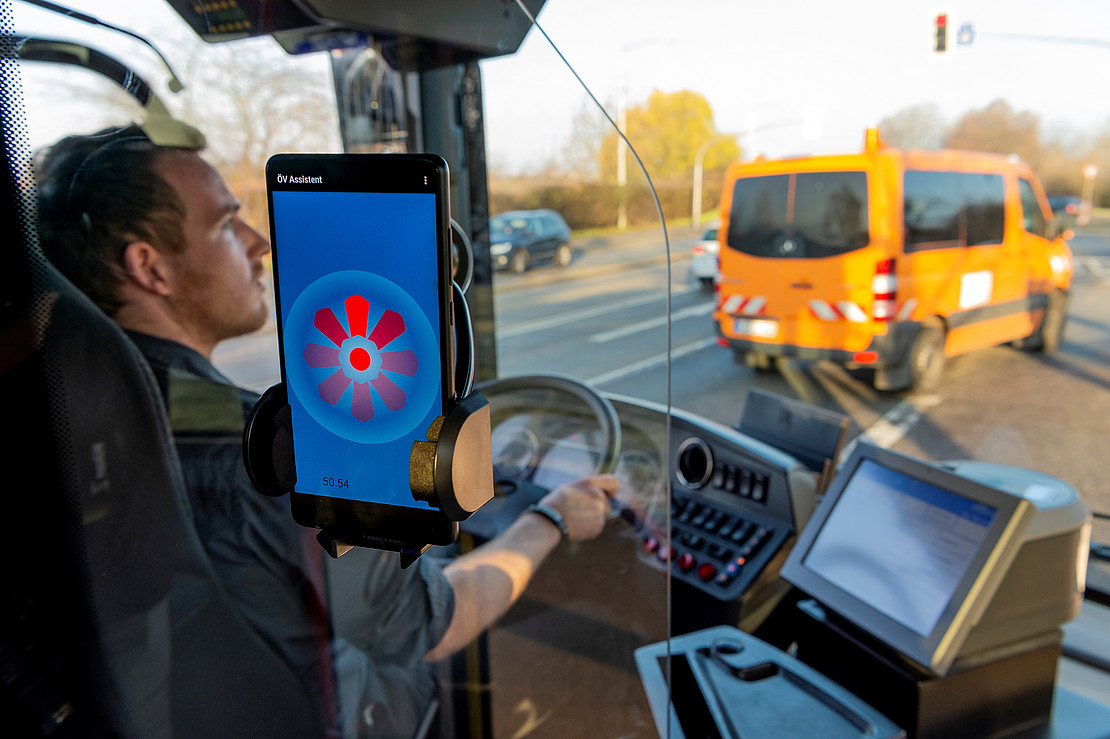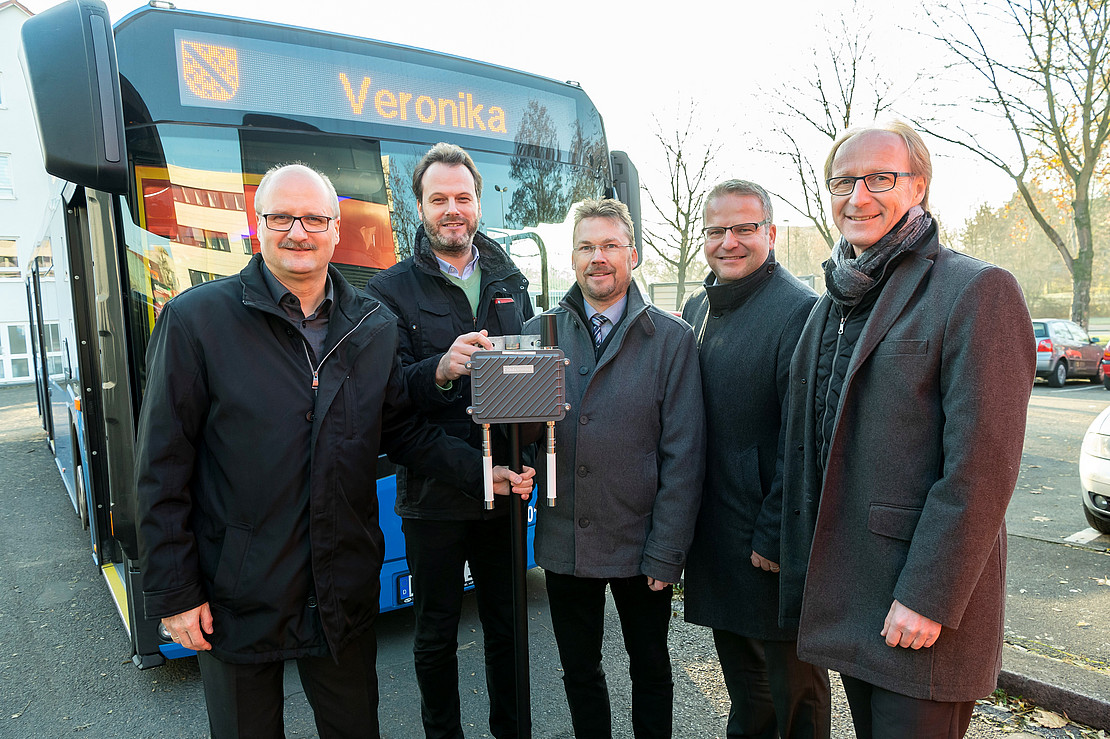This page contains automatically translated content.
Precisely fitting green for buses and trains: Digital test field in Kassel successful
 Image: City of Kassel/Bernd Schoelzchen.
Image: City of Kassel/Bernd Schoelzchen. Image: City of Kassel/'Bernd Schoelzchen.
Image: City of Kassel/'Bernd Schoelzchen.The Federal Ministry of Transport had funded the VERONIKA project with around 2.6 million euros. Of this, around 1.0 million euros went to the university and 1.6 million euros to the city. VERONIKA stands for "NetworkedpublictransportinKassel". On-board systems in the public transport vehicle and a component at the intersection, the so-called Roadside Unit (RSU), exchange data. To do this, they use a radio interface based on the IEEE 802.11p (US) or ETSI - ITS G5 (EU) automotive communications standard.
In the project, the city of Kassel equipped 15 traffic lights with RSUs and other technology to enable data exchange between vehicles and traffic infrastructure. In addition, ten buses and five streetcars received an on-board system, known as onboard equipment. The registration information is transmitted to a server operated by the city of Kassel, which calculates when a vehicle will reach the intersection.
Traffic in Kassel is already controlled according to traffic, but the new technology will enable the traffic lights to switch green phases for public transport vehicles even more precisely. This will also benefit cyclists, pedestrians and motorists, who will then have to wait for shorter periods at the traffic lights. The improved traffic flow is also expected to lead to a reduction in pollutants emitted. The technology was tested in ongoing traffic on the two test stretches from the Kassel-Auestadion freeway junction to Ständeplatz and the Kassel-Waldau junction to Platz der Deutschen Einheit.
The Department of Traffic Engineering and Transport Logistics at the University of Kassel (Prof. Dr.-Ing. Robert Hoyer) developed the system together with the city of Kassel and two companies from Kassel and Munich. Practical partners were Kasseler Verkehrs-Gesellschaft AG (KVG) and Bad Wildunger Kraftwagenverkehrs- und Wasserversorgungsgesellschaft mbH, in whose vehicles the components were installed. The Nordhessischer Verkehrsverbund (NVV) was also a cooperation partner.
The city of Kassel is currently in discussions as to which services can be transferred to continuous operation. The equipping of further traffic lights with roadside units is already underway, made possible by funding from the EU, the federal government and the state. By 2023, the Kassel urban area is to be extensively equipped with the new technology. "In the future, we will continue to work on the digitization of our transport infrastructure here in Kassel in order to take advantage of the opportunities and possibilities offered by the new technologies," affirmed Dirk Stochla, head of the transport department.
NVV Managing Director Steffen Müller also assessed the results of the project positively: "As one of the project partners, we have contributed our practical know-how together with the transport companies. For us, developments that make local public transport more reliable and easier to plan as part of road traffic are a great advantage. Our passengers then benefit directly from more punctual transport services made possible by the use of intelligent transport technology. That's why we were very happy to contribute our expertise."
KVG board member Dr. Thorsten Ebert added: "Digitization is an essential building block for the mobility revolution, and for public transport in particular, the automation of traffic flows plays a central role. That's why we were very pleased to be involved in the Veronika project."
---
Background Project VERONIKA:
The scientific support and the implementation of traffic simulations as well as the project management lay with the Department of Traffic Engineering and Transport Logistics at the University of Kassel. The Road Traffic and Civil Engineering Office of the City of Kassel was responsible for the installation and operation of the technology on the road, as well as for all adjustments to the traffic management system and traffic light circuits.
The project started on Jan. 1, 2017, and will end on Dec. 31, 2019. VERONIKA was among the first four research projects funded by the German Federal Ministry of Transport and Digital Infrastructure from the funding guideline "Automated and Connected Driving on Digital Test Fields in Germany" (funding code: 16AVF1016).
Contact:
Prof. Dr.-Ing. Robert Hoyer
University of Kassel
Tel.: +49 561 804-2628
E-mail: robert.hoyer[at]uni-kassel[dot]de
& nbsp;